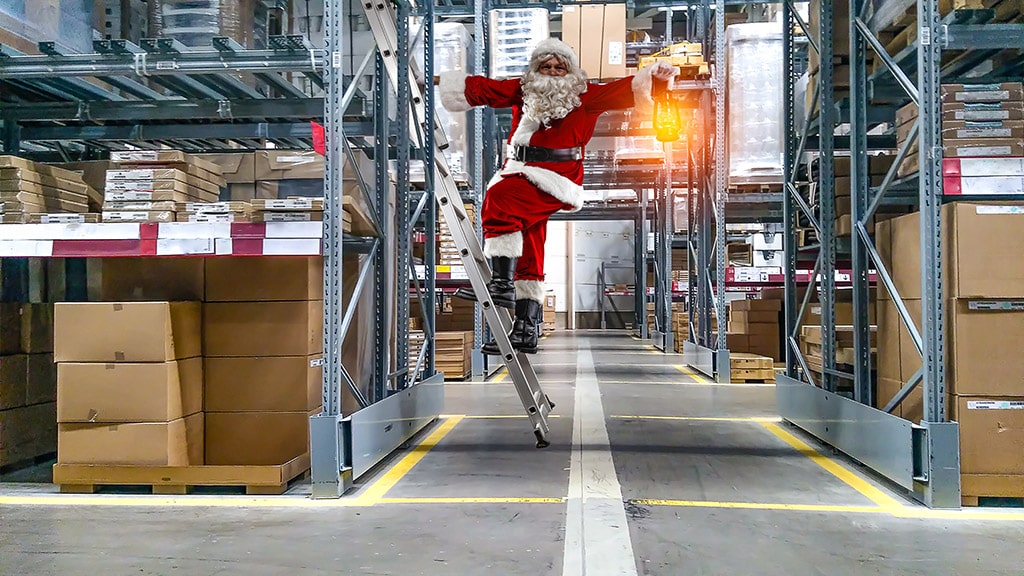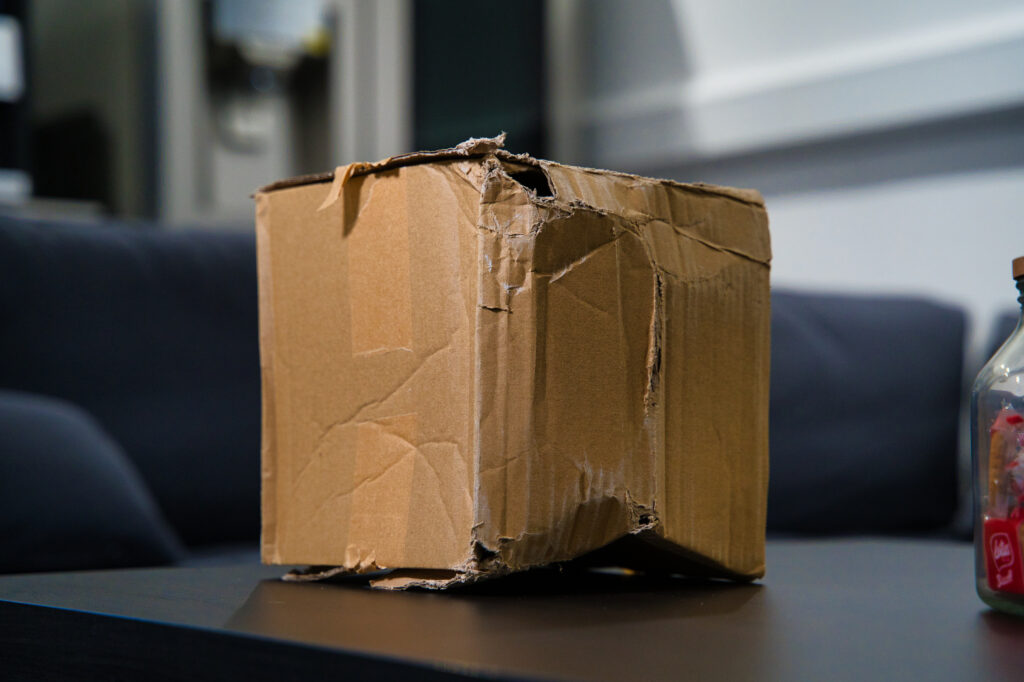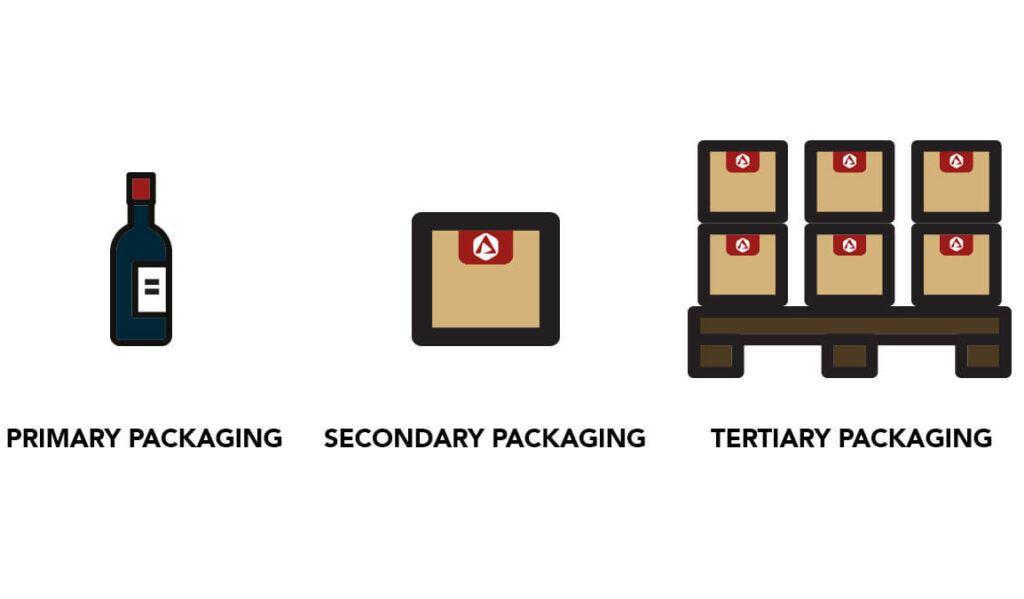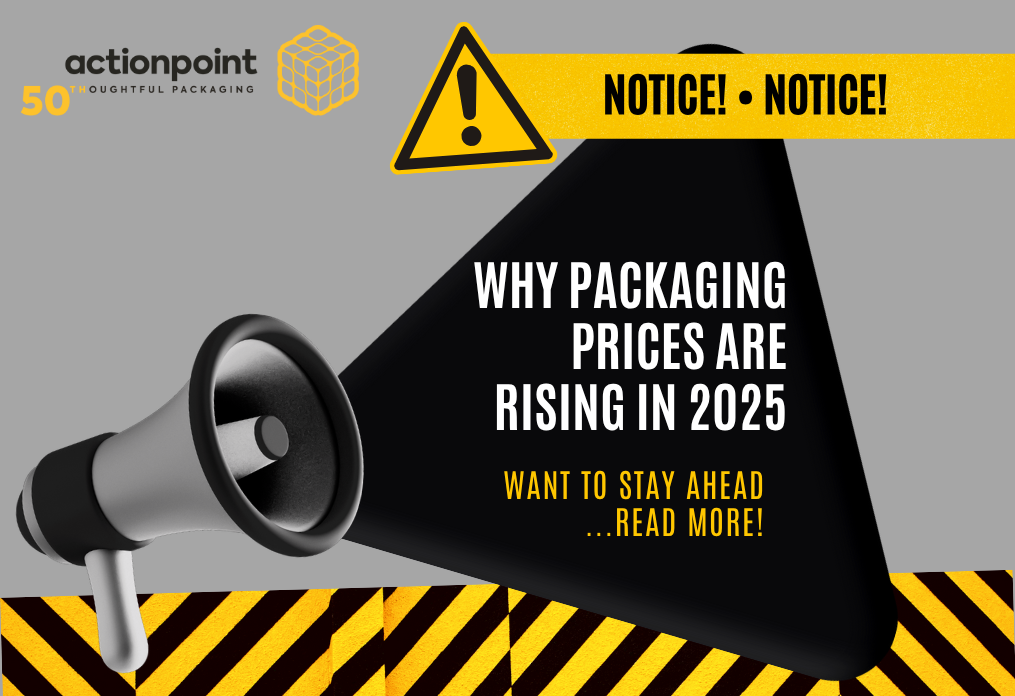The fourth quarter of the year is typically a very busy period for businesses, with Black Friday, Cyber Monday, and Christmas in quick succession. According to the Bank of England, UK households spend an average of £2,500 in a month, with an additional £740 (or 29%) going on festive goodies in December.
Shoppers hit the high street, and the internet, and the orders come flooding in. Packaging demand is high, and this pushes back lead times for materials and manufacturing. Advance planning takes on more urgency to capitalise on all the bustling consumer activity.
This, of course, is all during normal circumstances.
We had hoped to get back to some sense of normality after surviving a global pandemic, but the challenges keep on coming. Rocketing energy bills, rising inflation, and cost of living crisis are all pointing towards a leaner Christmas. So, what does this all mean and how will it affect your packaging?
Ghost Of Christmas Past
Often, we gauge what is likely to happen based on events of the past. But the world was so different a year ago. Despite COVID-19 vaccinations, the Omicron variant was spreading rapidly. People were instructed to work from home, face coverings were mandatory in public places, and we needed an NHS Covid Pass to enter large events.
There was a possibility that Christmas would be marred with restrictions, as it was in 2020 when the Government introduced the 4-tier alert system. (Remember the ‘Christmas is cancelled’ headlines?) So, perhaps it’s not surprising that consumers got their festive shopping done early in 2021, by November, with a quarter of sales made online.

That same month, gross domestic product (GDP) overtook pre-coronavirus levels for the first time with 0.7% growth. But this flurry of activity was short lived. Spending took a nosedive in December 2021 and the economy shrank by 0.2%.
Christmas Yet To Come
UK lockdowns are hopefully consigned to history, but we are unlikely to go back to carefree yuletide spending sprees any time soon. Consumers are having to tighten their belts. This July, the cost of domestic gas and electricity rose year-on-year by 96% and 54%. And UK inflation in August was at 9.9%, perilously close to July’s 40-year high of 10.1%.
The good news is that, according to a survey by Ebay Ads, Christmas is very much still on the agenda. A reason for celebration and hope; just a little more muted than the norm. A third of consumers are doing their festive shopping much, much earlier than usual because of growing inflation; with 29% of people starting as early as August.
More care is going into gift-giving with thoughtful (56%), functional (30%) and essential (23%) items topping the list. And 60% of customers are prioritising goods that show value for money. Black Friday will probably see a surge in activity with 50% of shoppers planning to capitalise on money-saving deals.
Christmas Wrapping
It’s autumn now, and Christmas will be here in the blink of an eye. We can’t stress this enough: get ready now. Every year, we remind our clients that the gap between placing an order and receiving your packaging is going to be significantly longer.
Corrugated lead times typically leap from 2 weeks to 6 or 8 purely because of seasonal demand. And this affect will be exaggerated even further because of current global events.
There is a strong possibility that paper mills in Europe will close or temporarily suspend trading, as they did earlier in the year, because of soaring energy costs. And, as before, this will create shortages and price hikes as there is less product to go round just when people are clamouring for more.
The only way to get round this is to act fast and get your orders in well in advance. And the further ahead you can plan, the better – both in terms of securing your packaging and locking in prices.
Dashing Through The Snow
At this time of year, many businesses are shipping the biggest amounts of their products to customers. But this also means that their brands and reputations are at greatest risk. Consumer expectations for quality, speed, and reliability are at their highest while courier networks are at their most strained.
Ask yourself, are you confident that your packaging will protect your goods from all the knocks and drops it will inevitably encounter? It’s worth checking your current rate of damages and returns to see if you need to update your packaging. Your supplier can advise you on alternative materials or how to tweak the design to ensure your products are kept safe in transit.
In Q4, timing and lead times become critical. Christmas is looming and people need to receive their parcels by a certain deadline – but it’s also the time of year when deadlines are often missed. Nobody wants to think about working with a new provider in the run-up to Christmas, but it may be the most important time to assess how well your packaging supplier is supporting you.

And ask them questions such as: what contingency plans do you have in place for supply chain delays or warehouse disaster recovery? It may be lower risk to change to a new supplier who offers stockholding options, guaranteeing that packaging is ready whenever you need it, rather than keeping your current set-up just because it’s familiar.
Christmas Card
Not to sound like a broken record, but…. we’ll probably see further price hikes this autumn for corrugated cardboard. There are many factors involved, but the main reasons for this are:
1. The Russia-Ukraine war
Russia’s shocking invasion of Ukraine on 24 February 2022 continues to have far-reaching consequences on the world economy. Disruptions in the flow of goods and energy have caused astronomical price increases and product shortages leading to an international cost-of-living crisis.
And Russia continues to use its natural gas as a political weapon, cutting supplies to Germany via Nord Stream 1 – the biggest gas pipeline to Europe – on 2 September, after G7 announced a price cap on Russian oil.
2. Fuel prices
It’s been a volatile period for fuel prices. In January 2020, petrol was 128p per litre. Then the threat of coronavirus grew and, just 2 months later, the UK’s first lockdown began (23 March). By May, while millions were working from home or furloughed, petrol was down to 106p per litre.
As restrictions eased, people were freer to go about their business and get back into the office, and so prices began their upward trajectory. By January 2022, petrol was 146p per litre. This rose rapidly following the conflict in Ukraine, reaching a record high of 191p per litre in July (despite fuel duty being cut by 5p per litre in March).
Thankfully, prices have lowered in recent months, falling to 167p per litre on 12 September. This is down on the previous month by 7.80p a litre, but up by a hefty 31.9p on a year ago.
3. Business challenges
Input price inflation, shrinking margins, and energy prices remain the top main concerns for businesses this year, according to the Office for National Statistics (ONS). UK employers are increasing staff wages but, in the face of towering inflation, the value of regular pay is falling in real terms, down by 2.8% in July.
Disruptions to the global supply chain continue to bite, with 21% of businesses experiencing issues in August 2022. Two-thirds were eventually able to get the materials, goods, or services they needed within the UK, although for some this meant changing suppliers or finding alternative solutions.
Government Intervention
So, what’s the Government doing about all this? Well, in response to spiralling costs on all sides, a support package has been introduced that includes a one-off £400 energy bill discount for all households, being paid in instalments over 6 months, and a £650 cost of living support package for those on Tax Credits. The latter is made in 2 instalments with the final payment going into accounts this autumn.
Within 2 days of becoming Prime Minster, on 8 September, Liz Truss announced an Energy Price Guarantee that will see a typical UK household paying no more than £2,500 a year on their energy bill for the next 2 years. Coming into effect from 1 October, this price includes the temporary removal of green levies (approximately £150) and replaces the existing energy price cap. Businesses will have equivalent support for 6 months.
Longer term plans will tackle escalating energy bills and security of supply. These involve launching more than 100 North Sea oil and gas licenses; lifting the 3- year fracking ban; building more nuclear power stations; and speeding up deployment of renewables such as hydrogen, solar, carbon capture and storage, and wind.
In a further attempt to bring down bills, reforms will ensure that the cost of gas no longer drives up the price of electricity. Under the current system, the price of electricity from cheaper-to-run renewable sources, such as offshore windfarms, is artificially inflated to the same amount as that from expensive gas-fired power stations. To combat this, the Contracts for Difference (CfD) scheme will ensure a fixed price for electricity from renewable generators.
Next Steps
All in all, spending will almost certainly be more cautious this year. But consumers are still determined to celebrate Christmas and are expected to take advantage of discounts available over the Black Friday and Cyber Monday period.
If you haven’t already done so, contact your supplier to arrange your packaging for the peak season, sharing any forecasting data or details of upcoming promotions. And don’t forget to bring past sales data for the run-up to Christmas in previous years, showing which products and offers were the most successful. These figures will help you to estimate the type and quantity of packaging you will need.

Now is also a good time to talk about revamping your packaging, whether you want greater product protection, a more sustainable solution, or to stand out from the competition with a holiday design that enhances your brand. With paper prices likely to increase, find out what cost-saving options are available. You could benefit from packaging that is smaller, lighter, eliminates voidfill, or is significantly quicker to assemble and pack.
Another conversation to have with your supplier is how you are going to store this extra packaging. Chances are space will be at a premium on your premises, especially as you will have additional stock on site.
There are many options to maximise your warehouse storage such as removing old or obsolete products, revamping your racking, and reducing aisle width. But if that still isn’t going to be enough, or if it will impede operational efficiency, then find out if your packaging supplier offers stockholding services at a reasonable price.
At Actionpoint, we want all our customers to have a merry Christmas. So, if you would like some advice on custom packaging for the festive peak, or to book an in-depth Bespoke Packaging Appointment at our Packaging Creation Lounge, contact us on 0800 840 9570 or via our contact form.




